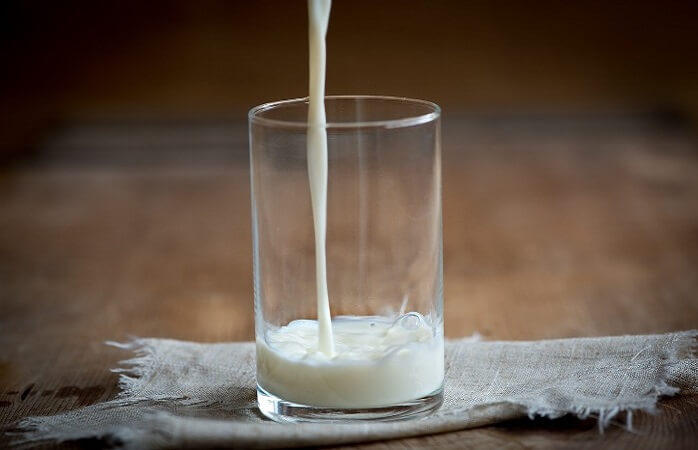Magnesium, properties of atom, chemical and physical properties

Magnesium, properties of atom, chemical and physical properties.
Mg 12 Magnesium
24,304-24,307 1s2 2s2 2p6 3s2
Magnesium — element of the periodic system of chemical elements D. I. Mendeleev, with atomic number 12. Located in the 2nd group (old classification — the main subgroup of the second group), the third period of the periodic system.
Table of chemical elements of D. I. Mendeleev
Note:
* Set the range of values of the atomic masses due to different prevalence of isotopes of a given element in nature.
Chemical reactions:
1. The reaction between magnesium and hydrogen:
Mg + H2 → MgH2 (t = 175 °C, kat = MgI2).
In the reaction, the formed magnesium hydride. The reaction takes place under excess pressure.
2. The oxidation reaction of magnesium with oxygen:
2Mg + O2 → 2MgO (t = 600-650 °C).
In the reaction, the formed magnesium oxide. During the reaction magnesium burns in air.
3. The reaction between magnesium and chlorine:
Mg + Cl2 → MgCl2.
The reaction produces magnesium chloride.
4. The reaction between magnesium and silicon:
2Mg + Si → Mg2Si (t°).
In the reaction, the formed silicide of magnesium. The reaction proceeds with fusion of the reaction mixture.
5. The reaction between magnesium and nitrogen:
3Mg + N2 → Mg3N2 (t = 700-800 °C).
The reaction produces magnesium nitride.
6. The reaction of interaction of magnesium and phosphorus:
3Mg + 2P → Mg3P2.
The reaction produces magnesium phosphide.
7. The reaction between boron and magnesium:
2B + 3Mg → Mg3B2 (t°).
In the reaction, the formed magnesium boride.
8. The reaction between bismuth and magnesium:
2Bi + 3Mg → Mg3Bi2 (t = 300-400 °C).
The reaction formed vismutin magnesium.
9. The reaction between antimony and magnesium:
2Sb + 3Mg → Mg3Sb2 (t ≈ 650 °C).
The reaction formed stibig magnesium.
10. The reaction of interaction of magnesium and water:
Mg + 2H2O → Mg(OH)2 + H2.
The reaction produces magnesium hydroxide and hydrogen. In the course of the reaction is hot water.
11. The reaction between beryllium oxide and magnesium:
BeO + Mg → MgO + Be (t = 700-800 °C).
The reaction produces magnesium oxide and beryllium.
12. The reaction of interaction of nitrogen oxide (I) and magnesium:
N2O + Mg → N2 + MgO (t ≈ 500°C).
In the reaction of formed nitrogen and magnesium oxide.
13. The reaction of interaction of nitrogen oxide (II) and magnesium:
2NO + 2Mg → N2 + 2MgO (t ≈ 500 °C).
In the reaction of formed nitrogen and magnesium oxide.
14. The reaction of interaction of magnesium and dinitrogen tetroxide:
Mg + 2N2O4 → Mg(NO3)2 + 2NO (t = 150 °C).
The reaction produces magnesium nitrate and nitric oxide.
15. The reaction between oxide of lithium and magnesium:
Li2O + Mg → 2Li + MgO (t = 800 °C).
The reaction formed lithium and magnesium oxide.
16. The reaction between the lithium oxide, magnesium and hydrogen:
Li2O + Mg + H2 → 2LiH + MgO (t = 450-500 °C).
The reaction formed lithium hydride and magnesium oxide.
17. The reaction between the boron oxide and magnesium:
B2O3 + 6Mg → Mg3B2 + 3MgO (t = 750-900 °C),
B2O3 + 3Mg → 2B + 3MgO (t°).
As a result of reaction formed in the first case a boride of magnesium and magnesium oxide, and the second boron, and magnesium oxide.
The second reaction provides a method of producing amorphous boron. The resulting boron – boron Moissan, the purity of 95-98 %.
18. The reaction of interaction of carbon monoxide and magnesium:
CO2 + 2Mg → 2MgO + C (t ≈ 500 °C).
The reaction produces magnesium oxide and carbon. In the course of reaction is burning magnesium in carbon dioxide.
19. The reaction between oxide of silicon and magnesium:
SiO2 + 2Mg → Si + 2MgO (t ≈ 1000 °C),
SiO2 + 4Mg → Mg2Si + 2MgO (t = 800 °C).
As a result of reaction formed in the first case – silicon and magnesium oxide. The first reaction is a laboratory method of production of silicon is carried out as follows: a mixture of dry sand and powdered magnesium light magnesium ribbon.
In the second case, the reaction, the formed silicide of magnesium and magnesium oxide. The reaction proceeds at a temperature not exceeding 800°C in hydrogen atmosphere.
20. The reaction of interaction of calcium oxide, hydrogen and magnesium:
CaO + H2 + Mg → CaH2 + MgO (t = 800-900 °C).
The reaction formed calcium hydride and magnesium oxide.
21. The reaction between magnesium and bromovalerate:
Mg + 2HBr → MgBr2 + H2.
In the reaction, the formed magnesium bromide and hydrogen. In the course of the reaction is diluted bromovalerate.
22. The reaction of interaction of magnesium and fluoride:
Mg + 2HF → MgF2 + H2.
The reaction produces magnesium fluoride and hydrogen. In the course of the reaction is the diluted solution of fluoride.
23. The reaction between magnesium and hydrogen sulfide:
Mg + H2S → MgS + H2 (t = 500 °C).
In the reaction, the formed sulfide of magnesium and hydrogen.
24. The reaction between magnesium and nitric acid:
5Mg + 12HNO3 → 5Mg(NO3)2 + N2 + 6H2O,
4Mg + 10HNO3 → 4Mg(NO3)2 + NH4NO3 + 3H2O,
4Mg + 10HNO3 → 4Mg(NO3)2 + N2O + 5H2O
2Mg + 6HNO3 → 2Mg(NO3)2 + N2O + NO + 3H2O.
As a result of reaction formed in the first case, a magnesium nitrate, water and nitrogen; the second, magnesium nitrate, ammonium nitrate and water, a magnesium nitrate, nitric oxide (I) and water, in the fourth or nitrate of magnesium, oxide of nitrogen (I) oxide nitrogen (II) and water. In the course of the reaction in the first and third case applies to diluted nitric acid, the second a very dilute solution of nitric acid in the fourth – a 30% solution of nitric acid.
25. The reaction between magnesium and phosphoric acid:
3Mg + 2H3PO4 → Mg3(PO4)2 + 3H2.
In the reaction, the formed orthophosphate with magnesium and hydrogen. In the course of the reaction is the diluted solution of phosphoric acid.
Similar reactions take place with other acids.
26. The reaction of interaction of magnesium and ammonia:
3Mg + 2NH3 → Mg3N2 + 3H2 (t = 600-850 °C).
The reaction produces magnesium nitride and hydrogen.
27. The reaction between beryllium fluoride and magnesium:
BeF2 + Mg → MgF2 + Be (t = 700-750 °C).
The reaction produces magnesium fluoride, and beryllium.
28. The reaction between the fluoride of silicon and magnesium:
SiF4 + 2Mg → Si + 2MgF2 (t = 500-600 °C).
The reaction formed silicon and magnesium fluoride. In the course of the reaction admixture is used, the silicide of magnesium Mg2Si.
29. The reaction between lithium carbonate and magnesium:
Li2CO3 + Mg → 2Li + MgO + CO2 (t = 550-600 °C).
The reaction formed lithium magnesium oxide and an oxide of carbon.
30. The reaction of interaction of magnesium and carbonate of rubidium:
3Mg + Rb2CO3 → 2Rb + 3MgO + C (t°).
The reaction produced rubidium, magnesium oxide and carbon. This method extracted the rubidium.
31. The reaction between silicon carbide and magnesium:
2SiC + 5Mg → 2Mg2Si + MgC2 (t ≈ 700°C).
The reaction formed of the silicide of magnesium carbide and magnesium.
32. The reaction between tin chloride and magnesium:
SnCl2 + Mg → MgCl2 + Sn (t = 200-300 °C).
The reaction produces magnesium chloride and tin.
33. The reaction between chloride of vanadium and magnesium:
2VCl3 + 3Mg → 2V + 3MgCl2.
In the reaction, the formed vanadium and magnesium chloride.
34. The reaction between ferric chloride and magnesium:
2FeCl3 + 3Mg → 2Fe + 3MgCl2 (t = 300-400 °C).
The reaction produces iron, and magnesium chloride.
35. The reaction between titanium chloride and magnesium:
TiCl4 + 2Mg → Ti + 2MgCl2 (t = 800-850 °C).
The reaction formed titanium and magnesium chloride. In the course of the reaction is magnesium in the form of a melt. The reaction is carried out at temperatures in the absence of air in an argon atmosphere.
36. The reaction between chloride of hafnium and magnesium:
HfCl4 + 2Mg → Hf + 2MgCl2 (t = 650-700 °C).
In the reaction, the formed hafnium and magnesium chloride.
37. The reaction between chloride of zirconium and magnesium:
ZrCl4 + 2Mg → Zr + 2MgCl2 (t ≈ 700 °C).
The reaction produces zirconium and magnesium chloride.
38. The reaction between tantalum chloride and magnesium:
2TaCl5 + 5Mg → 2Ta + 5MgCl2 (t ≈ 750°C).
In the reaction, the formed tantalum and magnesium chloride.
39. The reaction between chloride of vanadium oxide, carbon and magnesium:
2VCl3 + 12CO + 4Mg → Mg[V(CO)6]2 + 3MgCl2 (t ≈ 135 °C).
The reaction formed hexacarbonylchromium of magnesium and magnesium chloride. The reaction proceeds in pyridine at a temperature of about 135°C and excess pressure.
40. The reaction between sulphate of beryllium and magnesium:
2BeSO4 + 2H2O + Mg → Be2(OH)2SO4 + MgSO4 + H2.
The reaction formed hydroconsult beryllium, magnesium sulphate and hydrogen.
41. The reaction between the sulphide of titanium and magnesium:
TiS2 + 2Mg → 2MgS + Ti (t ≈ 1000 °C).
In the reaction, the formed sulfide of magnesium and titanium. The reaction proceeds in an atmosphere of argon.
42. The reaction of interaction of sodium tetraborate and magnesium:
Na2B4O7 + 6Mg → 4B + 6MgO + Na2O (t ≈ 600 °C).
In the reaction, the formed amorphous boron, magnesium oxide and sodium oxide.
43. The reaction of interaction of magnesium and pentane:
10Mg + 3C5H12 → 5Mg2C3 + 18H2 (t = 700 °C).
In the reaction, the formed carbide of magnesium and hydrogen. The reaction proceeds when heated to a temperature of not more than 700°C.
44. The reaction between magnesium and cyclopentadiene:
Mg + 2C5H6 → Mg(C5H5)2 + H2.
The reaction formed cyclopentadienyl magnesium and hydrogen.
45. The reaction of interaction of magnesium and ammonium nitrate:
Mg + 2NH4NO3 → Mg(NO3)2 + 2NH3 + H2.
The reaction produces magnesium nitrate, ammonia, and hydrogen.
46. The reaction of interaction of magnesium and acetylene:
Mg + C2H2 → MgC2 + H2 (t = 400 °C).
In the reaction, the formed carbide of magnesium and hydrogen.
Table of chemical elements of D. I. Mendeleev
1. Hydrogen
2. Helium
3. Li
4. Beryllium
5. Bor
6. Carbon
7. Nitrogen
8. Oxygen
9. Fluoride
10. Neon
11. Sodium
12. Magnesium
13. Aluminium
14. Silicon
15. Phosphorus
16. Sulfur
17. Chlorine
18. Argon
19. Potassium
20. Calcium
21. Scandium
22. Titan
23. Vanadium
24. Chrome
25. Manganese
26. Iron
27. Cobalt
28. Nickel
29. Copper
30. Zinc
31. Gallium
32. Germanium
33. Arsenic
34. Selenium
35. Bromine
36. Krypton
37. Rubidium
38. Strontium
39. Yttrium
40. Cubic Zirconia
41. Niobium
42. Molybdenum
43. Technetium
44. Ruthenium
45. Rhodium
46. Palladium
47. Silver
48. Cadmium
49. Indium
50. Tin
51. Antimony
52. Tellurium
53. Iodine
54. Xenon
55. Cesium
56. Barium
57. Lantan
58. Cerium
59. Praseodymium
60. Neodymium
61. The promethium
62. Samarium
63. Europium
64. Gadolinium
65. Terbium
66. Dysprosium
67. Holmium
68. Erbium
69. Tullius
70. Ytterbium
71. Lutetium
72. Hafnium
73. Tantalum
74. Tungsten
75. Rhenium
76. Osmium
77. Iridium
78. Platinum
79. Gold
80. Mercury
81. Thallium
82. Lead
83. Bismuth
84. Polonium
85. ASTAT
86. Radon
87. Frances
88. Radium
89. Anemone
90. Thorium
91. The protactinium
92. Uranium
93. Neptunium
94. Plutonium
95. Americium
96. Curium
97. Berkley
98. California
99. Einsteini
100. The fermium
101. Mendeleevo
102. The nobelium
103. Lawrence
104. Rutherfordi
105. Dubna
106. Cyborgy
107. Bore
108. Chassi
109. Materii
110. Darmstadtium
111. Rentgeny
112. Copernici
113. Nichani
114. Planovi
115. Of Muscovy
116. Livermore
117. Tennessen
118. Ohanneson
Table of chemical elements of D. I. Mendeleev
Note: © Photo ,


